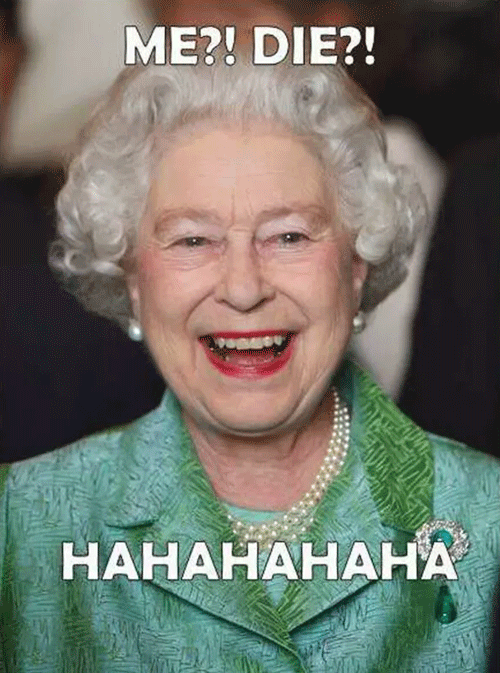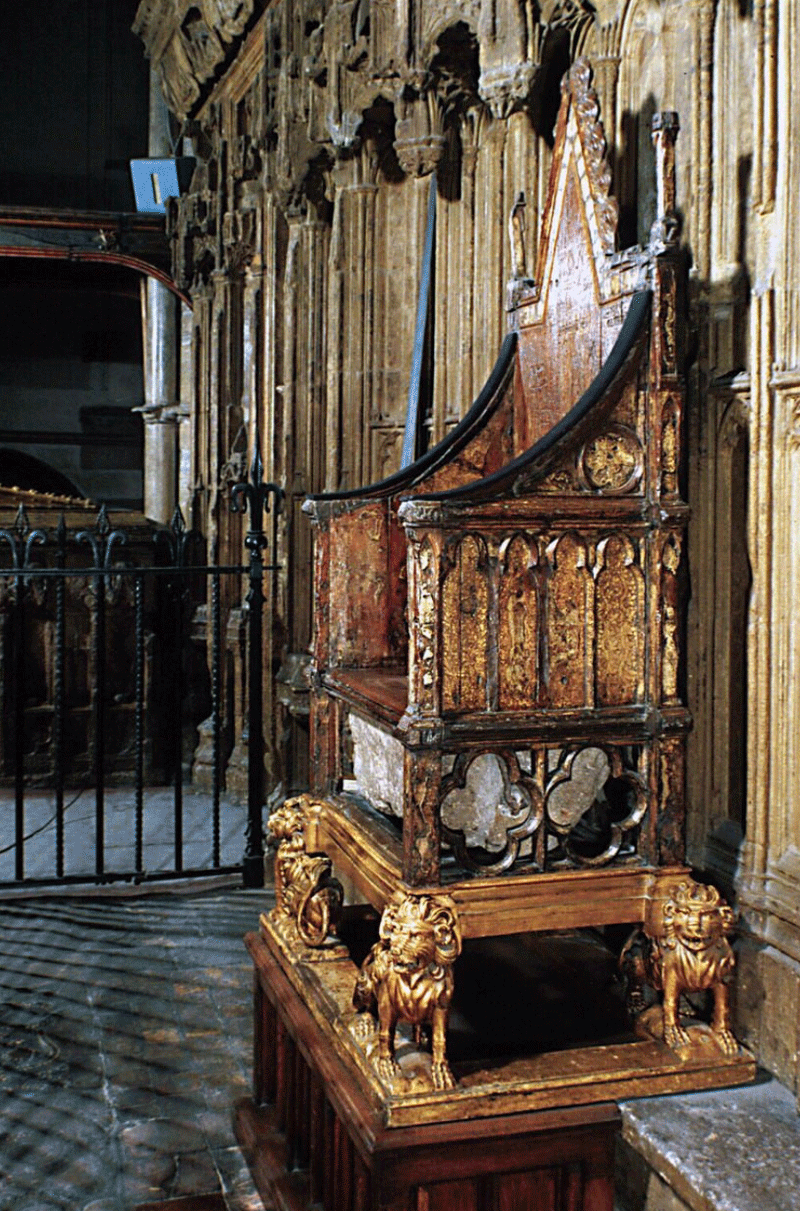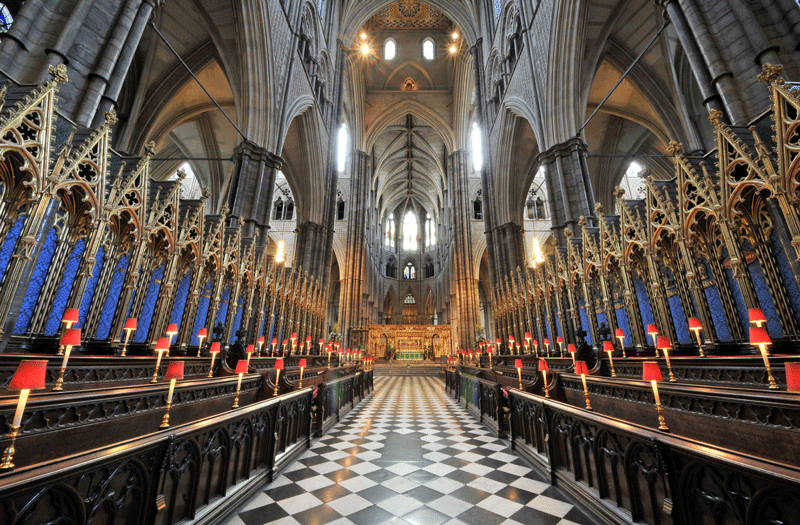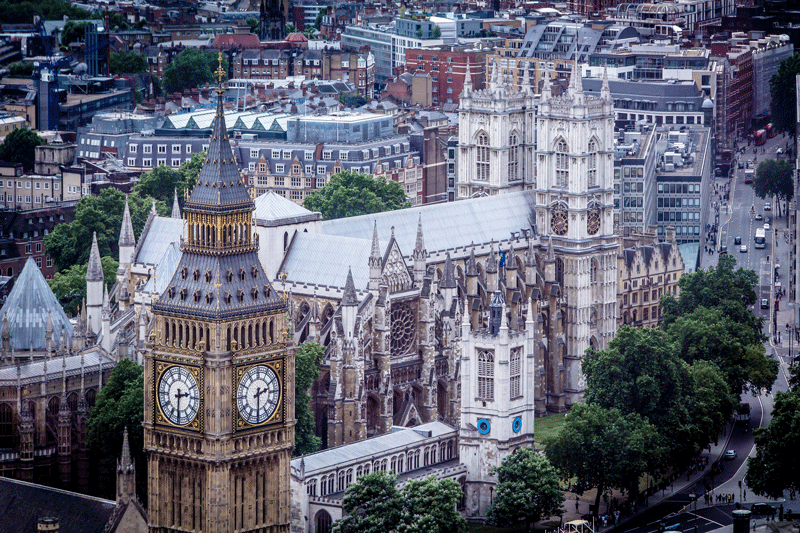One of the more popular historic landmarks to visit in London is Westminster Abbey. Meaning each year over 1 million visitors explore this magnificent church with over 1000 years of heritage, taking in all the building’s rich history.
If you haven’t been intrigued enough already to visit Westminster Abbey – now a UNESCO World Heritage Site – on your next visit to London, read these amazing facts that will change your attitude and will make you visiting Westminster Abbey on top of your list.
This is the Coronation Church
First of all, by visiting Westminster Abbey you are visiting the place that has been the coronation church since 1066 and is the final resting place of 17 monarchs. In fact, 39 coronations have taken place at Westminster Abbey with the most recent on 2 June 1953. This coronation was for the current, by the way longest serving monarch, her Majesty Queen Elizabeth II, who is the eldest daughter of King George VI and Queen Elizabeth.

King Edward’s Chair
King Edward’s Chair, or the Coronation Chair, is the throne that every British monarch sits on during the coronation since 1308.But, up close, you will notice that is that it is covered in graffiti – the work of
schoolboys and other visitors in the 1700s and 1800s. Her Majesty Queen Elizabeth II was crowned on King Edward’s Chair, along with every monarch since 1308.

King Edward’s Chair and the Coronation Stone
The Founders of Westminster Abbey
Westminster Abbey was formed by Benedictine monks who first came to this site in the mid 10th century, establishing the original Westminster Abbey in 960, with a tradition of daily worship which continues to this day.
The Cloister was originally built in the 13th century. It was completely rebuilt after it was destroyed by a fire in 1298. The cloister was used by the Benedictine monks for meditation and exercise.
In 1245 the current Westminster Abbey was started by Henry III and because of its medieval shrine of Anglo-Saxon saints it became one of the most important Gothic buildings in the UK.
Have you heard of The Collegiate Church of St Peter at Westminster?!
The official name for Westminster Abbey is the Collegiate Church of St Peter at Westminster. However, the abbey doesn’t operate like a regular church reporting to the hierarchy within the Church of England. Around 1560, the abbey was designated with a special “Royal Peculiar” – which is a church responsible directly to the Sovereign.

Royal Weddings
17 royal weddings have taken place at Westminster Abbey with the most recent on 29 April 2011. This was the royal wedding of Prince William of Wales now Duke of Cambridge, who is the eldest son of Charles, Prince of Wales and Diana, Princess of Wales. He married Miss Catherine Middleton now Duchess of Cambridge.
Bearded Woman
A statue of Saint Wilgefortis stands in the Lady Chapel of Henry VII and is notable for being the only statue in the Abbey of a bearded woman. Legend has it that Saint Wilgefortis prayed to be made repulsive in order to escape a forced marriage. Her prayers were answered and she was given a beard.
The Da Vinci Code
Westminster Abbey is the setting of a climactic scene in Dan Brown’s novel The Da Vinci Code. As a result of the book’s and movie’s popularity, the Abbey saw a flock of new tourists, but as the story was a work of fiction, some people were led to believe details that were untrue. To address the situation, the Abbey distributed information sheets for tour guides to discuss with their groups as a means to correct the factual errors in the book.
Tombs and Monuments in the Abbey
The Abbey’s history is made up of famous Kings and Queens, as well as renowned poets and priests – even heroes and villains were embroiled in its past! Over 3,300 people have been buried or commemorated at Westminster Abbey. This includes seventeen British monarchs including King Henry V and all the Tudors except for Henry VIII. Other notable people at Westminster Abbey include Isaac Newton, Edward the Confessor and Charles Dickens, Geoffrey Chaucer, Dr. Samuel Johnson and Charles Darwin were buried in the church’s grounds.
There are 450 tombs and monuments in the Abbey. Westminster contains impressive statues and monuments from the Virgin Mary holding a baby Jesus to the grave of the unknown warrior.
Poets’ Corner
Poets’ Corner is the name traditionally given to a section of the South Transept of Westminster Abbey because of the high number of poets, playwrights, and writers buried and commemorated there.
Wax Figures
Westminster Abbey’s museum holds the wax figures of many previous monarchs, with nearly all of them in traditional full costume.
During WW 2
During the Second World War, about 60,000 sandbags were used to protect immoveable royal and medieval tombs. The Coronation Chair was sent for safety to Gloucester Cathedral and the Coronation Stone was buried secretly within the Abbey.
Reopened Gallery
The gallery runs 21 meters (70 feet) above the Abbey floor, and has been hidden to the public for over 700 years. It will opened again in 2018.
Bells
Since the first established bell ringing group in 1255, the Brethren of the Guild of Westminster, the bell ringers of today are comprised of a volunteer group who ring on special occasions such as saint’s days, church festivals and Royal and Abbey anniversaries, civic events and for special services.
Architecture
The architecture within Westminster Abbey is beyond spectacular, and one of the most magnificent areas is the Henry VII Chapel commonly referred to as the Lady chapel. The pendant fan vault ceiling is beyond beautiful and definitely must be seen in person.

Complete with paintings, stained glass windows and other religious artefacts, Westminster Abbey owns the most important collection of monumental sculpture anywhere in Britain.
Organ
The beautiful organ at Westminster Abbey was made by Harrison and Harrison and “installed for the Coronation of King George VI in 1937. With four manuals and 84 speaking stops, it incorporated some of the pipework from the previous five-manual instrument, built by William Hill in 1848.
Sermons
Regular Worship does take place at Westminster Abbey. Each Sunday five separate sermons are delivered at Westminster Abbey or St Margaret’s. The life of the abbey revolves around worship; Morning Prayer, Evensong and the Eucharist. The services are open to the public of any religious denomination.
Music
Westminster Abbey has been actively musical since the monks of the tenth century, to the daily choir singers of today, the Choir of Westminster Abbey. The earliest pair of organs were installed in 1304 in the Lady Chapel. Some of the most celebrated British musicians, organists, singers and composers have been linked to the Abbey throughout their careers.
Flag Days
On top of the North Tower, constructed between 1722 and 1745, sits a flag pole which flies various flags throughout the year for different occasions. The flags consist of; the Commonwealth Nations, the Flag of St Peter, the Abbey Flag, the Union Flag, the Flags of the National Saints, the Royal Air Force Flag, and the Royal Standard.
Chapter House and The Oldest Door I saw
The beautiful octagonal Chapter House is one of the largest of its kind in England. It has an original tile floor dating from 1250 and its walls are decorated with 14th-century murals. The Chapter House has one of the oldest doors dating to 1050.
College Gardens
Westminster Abbey’s College Garden is a peaceful spot and one of the oldest gardens in England. At one time it was used by the monks to grow medicinal herbs and food.
Just a short walk from the Thames, visiting Westminster Abbey is a must-do. I would say the best time to visit Westminster Abbey is during the week early in the morning before the crowds descend. I hope you enjoyed reading my favorite facts about Westminster Abbey, thanks for taking the time reading, let me know your thoughts on any of my social channels!
Cheers,
Istvan

